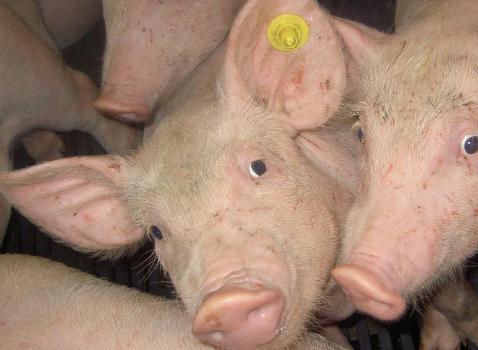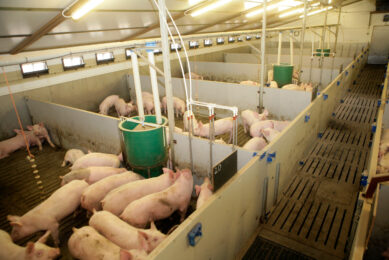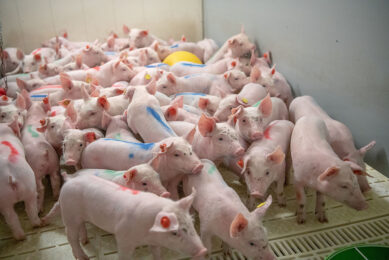Ten years of PCV2 in the UK

A decade ago, the first signs of Post-Weaning Multisystemic Wasting Syndrome (PMWS) surfaced. Ever since, the pig industry has increased its knowledge about PCV2 virus. What trends and developments can be seen, looking back over ten years of PCV2 in the United Kingdom?
By David Burch, veterinarian, Octagon Services Ltd, UK
In the UK we have lived with post-weaning multisystemic wasting syndrome (PMWS) since the first cases in 1999. Now, for the first time in the last decade, we can look forward with confidence to producing pigs without the ravages of mortality and wasting caused by porcine circo-virus type 2 (PCV2) following the successful introduction of the vaccines against this disease.
In the UK, PCV2-related mortality in younger pigs went down to pre-1999 levels when sows gradually developed grades of immunity for the virus over the years.
The British Pig Executive (BPEX) keeps a record of production figures based on over 50% of the UK national herd and this data has been used to track the effects of the disease. As the infection spread across England we saw a steady increase in mortality in weaners, growers and finishers until it reached a peak in about 2003 (see Figure 1) of 7.9% additional, combined mortality.
Mortality figure change
There appeared to be a changing pattern in the mortality figures in the weaner and growers at this time, which is thought to be due to the development of immunity in the national sow herd and the production of maternally derived antibodies (MDAs), which then started to protect the younger pigs and the mortality in this group (approximately 35-38 kg bodyweight) continued to fall almost to normal pre-outbreak levels of 2.4%.
Finisher mortality continued to stay high until 2006 when the sow vaccine CircovacSRTm(Merial) was introduced in December, under special licence. The piglet vaccines were introduced the following September, 2007, also under special license, both Ingelvac CircoFlexSRTm(Boehringer Ingelheim) and Fort Dodge’s Suvaxyn PCV 1 shot. BPEX introduced a vaccine voucher scheme in 2008 to encourage producers to adopt the new vaccines and as a result of a large take up of over 60% of the national herd, the finisher mortality has now returned to slightly lower than 1998 levels at 3.5%.
Sow fertility
The effects of PCV2 on sow fertility and piglet survival have also been highlighted as an additional effect of the disease, although it was not as dramatic in nature as some other viral infections such as parvovirus and porcine reproductive and respiratory disease virus (PRRSV) when they struck relatively naïve sow herds.
Small but significant drops in production can be observed in piglets born alive and piglets reared/litter (see Figure 1), and again these have returned to pre-epidemic values since the introduction of the vaccines.
At their worst level, piglets born alive dropped from approximately 11.01 to 10.74 (-0.27) in 2003 and piglets reared/litter fell from 9.78 to 9.50 (-0.28) as late as 2006. If this is multiplied up by litters/year this represented 0.63 of a piglet/year or equivalent to an additional 2.9% mortality, albeit small pigs, but also with a significant value. If the production figures are then compared with those from 1998 there was an overall 12% loss of pigs produced nationally in 2003 and after the introduction of vaccines we have returned to an overall gain of 0.7% in pig production in 2008 (see Table 1).
Cost consequence
If all the percentage loss of piglets produced and additional weaner/grower and finisher mortality is totalled during the epidemic it comes to 21.2, 11.8 and 16.5% for each group respectively. If a value of €30, €45 and €75 are put on each category of pig and based on an annual production of 9 million pigs, it can be costed at €216 million, just on increased mortality alone, or €24 million per 1 million pigs produced. If this is scaled up over the EU 27 with 240 million pigs produced/year, the costs could be as high as €5.76 billion.
One can see why this epidemic has been such a major disaster over the last decade, especially in the UK. In the future, we must learn how to contain new virus epidemics and not allow them to spread to other countries and across the world as this one has. We must be more aware and impose movement restrictions and controls more rapidly. We must be able to speed up vaccine development and availability, so we can combat the disease rather than wait the usual 10-12 years, when the epidemic is coming under control through other means. It has improved our understanding of viral diseases in the pig and we hope this expertise will be nurtured and developed in the future in readiness for the next epidemic.
BPEX: PCV2 vaccination trial results Following the successful introduction of the BPEX PCV2 vaccination national project last year, over 422 herds, representing 263,000 sows (61% of national herd), took up the voucher scheme to obtain vaccines in exchange for production data before and after vaccination. From the breeding herd results, sow vaccination with Circovac (Merial) increased the number of pigs born and weaned/litter by 0.2 after six months and increased conception rates by 5%, both results were statistically significant. The piglet vaccinating herds also improved their piglets weaned, conception rates and returns to service, significantly and this was postulated to be due to lowering the viral levels and challenge on the farms. Two groups of pigs of 41,000 and 30,000 were given the piglet vaccine CircoFlex (Boehringer Ingelheim) and the results were compared with the previous batches. Mortality significantly fell from 3.90 to 2.19% (-1.71%) in the first farm and 6.40 to 3.39 (-3.01%) in the second farm. Growth rates increased significantly by 58.3 g and 38.4 g, respectively but FCE improved by 0.03 and 0.08, which were not significant. In asecond study, carried out at Leeds University, involving 183 litters and 1,776 piglets, half of the sows were vaccinated with Circovac and a further half of the piglets were vaccinated with CircoFlex as well. In the unvaccinated sows half of the litters were vaccinated with CircoFlex and the other half remained as unvaccinated controls. Total born alive was improved by sow vaccination by 0.5 piglets but this was not significant. Piglet weight at weaning was significantly improved by sow vaccination by 0.3-0.4 kg. Post-weaning daily gain, lifetime gain and days to slaughter were improved significantly by both sow and piglet vaccination. The best performance was with the combined sow and piglet vaccination numerically. Mortality was significantly reduced by vaccination in general, although piglet vaccine alone reduced it by 2.3%. Overall, BPEX felt the scheme was a success, to improve the herd’s health. There was evidence that the vaccines worked and there was economic benefit. |
Source: Pig Progress Volume 25 nr 6











